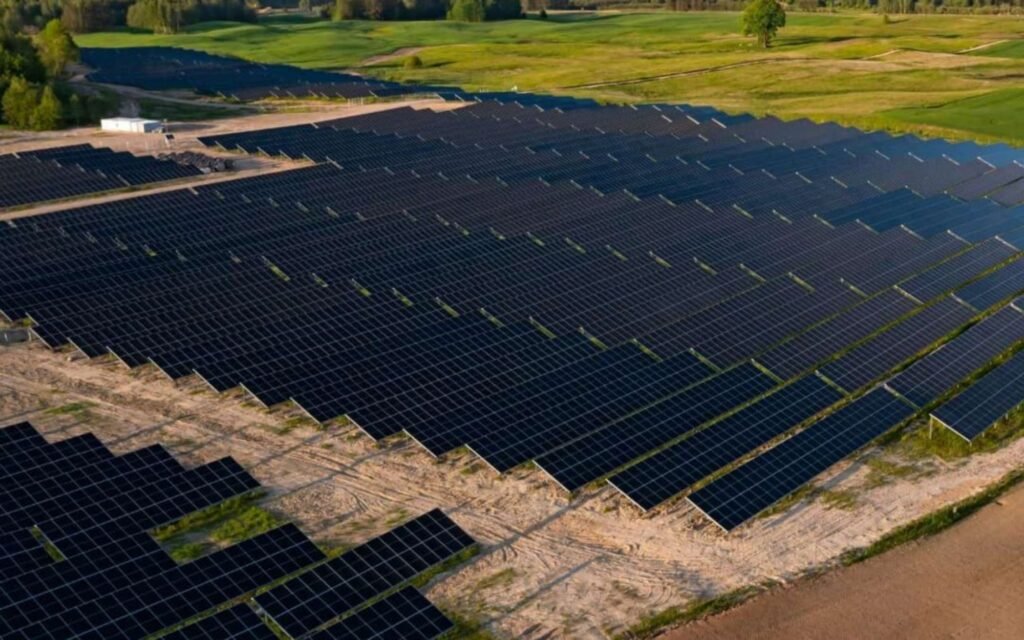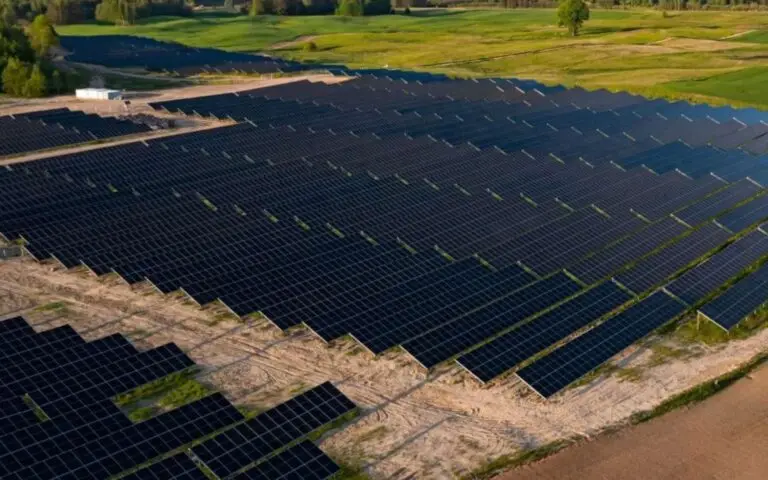
Climate change has been a long-standing issue that is felt across the world. Efforts to minimize fossil use are ongoing. This has led to an increase in investments across the governments which created another Industry in power. This made many companies bank on the opportunities to monetize and be competitive in pricing.
Even power generation from solar or wind in the longer run provides huge margins on profits due to lower operating costs. One of the players is Adani. In this article, we will look at Adani Green Energy which operates in the renewable power sector.
Company Overview Of Adani Green Energy
Adani Green Energy is a subsidiary under the group of Adani. The company is a renewable energy. They construct, develop, operate, own, and maintain utility-scale grid-connected solar, solar parks, hybrid power projects, and wind projects. They produce power from renewable energy projects. Their electricity is used by state and central government entities.
AGEL operates offices situated in Karnataka, Tamil Nadu, Madhya Pradesh, Gujarat, and Rajasthan. It is headquartered in Ahmedabad India. The company has generated around 81 billion units, powered by 16.1 million households. AGEL has an operational capacity of 10,934 MW as of FY24. Adani Green has increased its capacity target from 45 GW to 50 GW by 2030.
Renewable Energy Overview And Outlook
India has set ambitious goals to reduce its carbon footprint and transition to renewable energy sources. By the end of the decade, the country is aiming to lower the carbon intensity of its economy by at least 45%.
Additionally, India plans to achieve 50% of its total installed power capacity from renewable sources by 2030.
To further its renewable energy targets, India has set a goal of installing 500 GW of renewable energy capacity by 2030. This includes a significant push for solar energy, with the approval of 50 solar parks with a combined capacity of 37.49 GW.
The country also aims to produce 5 million tonnes of green hydrogen by 2030, which will be supported by 125 GW of renewable energy capacity. India’s wind energy sector is also set to play a crucial role, with a target of 30 GW of offshore wind capacity by 2030. The government has already identified potential sites for these offshore wind projects.
India’s commitment to clean energy is evident in its current installed renewable energy capacity, which is the fourth-largest in the world. The government is actively undertaking various large-scale sustainable power projects and promoting green energy heavily. This transition to renewable energy not only helps India reduce its carbon footprint but also has the potential to create numerous employment opportunities, particularly in rural areas.
The country’s limited conventional energy resources with its growing population, and economy, the country has recognized the importance of improving its solar energy potential. Additionally, India is exploring the vast hydropower potential, especially in the Northeast region. Furthermore, the country is the only G20 nation that is on track to achieve its targets under the Paris Agreement.
By 2040, it is expected that around 49% of India’s total electricity generation will come from renewable sources, as more efficient battery storage solutions are developed. The increased use of renewables in place of coal is projected to save India approximately Rs. 54,000 crore (US$ 8.43 billion) annually.
How is India Benefitting From This Energy Transition?
India’s shift towards renewable energy sources offers significant benefits. By reducing its reliance on fossil fuels, the country lowers greenhouse gas emissions, combating climate change and improving air quality for better public health.
This energy transition also creates new job opportunities in manufacturing, installation, and maintenance of renewable infrastructure, boosting the economy and providing employment prospects.
Additionally, the development of domestic renewable energy sources enhances India’s energy security by decreasing its dependence on imported fuels. This diversification stabilizes energy prices and ensures a more reliable energy supply, supporting the country’s long-term economic growth and stability.
Financial Overview And Their Segments
Adani Green Energy has revenue from operations of Rs. 9,220 crore in FY24 compared to Rs. 7,776 crore in FY23 indicating a growth of 18.56% YoY. Net profits stood at Rs. 1,260 crore in FY24, a 29.49% YoY from Rs. 973 crore in FY23.
The Net profit margin stood at 12.05% in FY24 compared to 11.27% in FY23. The finance cost has increased around 72% YoY which had an impact on the margins. However, the cost of equipment has reduced from 22.47% to 12.87% as a percentage of the operational revenue. Other expenses were also reduced YoY,
The RoE in FY24 stood at 16.88%, down from 22.13% in FY23. ROCE was 9.95% in FY24, improved from 7.58% in FY23. There is a contrasting return between the two ratios. The ROE returns were down YoY due to higher reserves and net profit affected by interest costs.
Whereas in ROCE, returns have increased due to an increase in EBITDA or EBIT and the borrowings have gone up which is lower than the financial growth rate in FY24.
There was a fresh infusion of debt from financial institutions in FY24.
The EBITDA from power supply in FY24 stood at Rs. 7,222 crore which is a 30% increase YoY. Rs. 10,462 crore was the run rate EBITDA as of 31st March 2024 which resembles an expected growth in earnings if operational and financial performance continue and it’s above the current year’s EBITDA value.
Will Adani Green Become India’s Largest Green Energy Producer And Distributor?
Peer Comparison
Adani Green Energy has a higher market capitalization among its peers. Tata Power’s business has thermal but even they are in transition towards renewable energy. In the price-to-earnings ratio, Adani Green has a higher ratio among its peers and Borosil has zero P/E due to recent losses. The RoE and ROCE of Adani Green are on par with Tata Power.
KPI Green Energy has a better margin than these two companies. Waaree Renewables has superior margins among its peers. The debt-to-equity ratio in Adani Green is
around 6.6 times compared to its peers having 1.24 times for KPI Green, 0.66 for Borosil, and others having less than 0.5. Overall, Adani Green has a higher comparable
valuation among its peers. The market has given a higher premium for Adani Green due to its prospects and higher growth despite high debt.

Conclusion
As we look into the company’s overview, financials, Industry outlook, and plans, we will look at the company in brief. Adani Green is at the forefront of the renewable industry growth and they are taking opportunities to become a leader. The increase in capacity is looking to replace thermal or fossil fuel-backed energy can be of greater use to the people and environment.
Adani Green’s financials are decent apart from its debt. Most of their revenue goes to Interest costs and there are signs of improvement in operational efficiency by cutting down on costs. Decreasing debt can help the company to strengthen its balance sheet further. As compared to its peers, Adani Green has an edge that is already deep into Solar power generation. What do you think about Adani Green? What do you think about its potential? Let us know your views in the comments section below..
Next post :- ECOS India Mobility & Hospitality IPO – GMP, Financials And More

